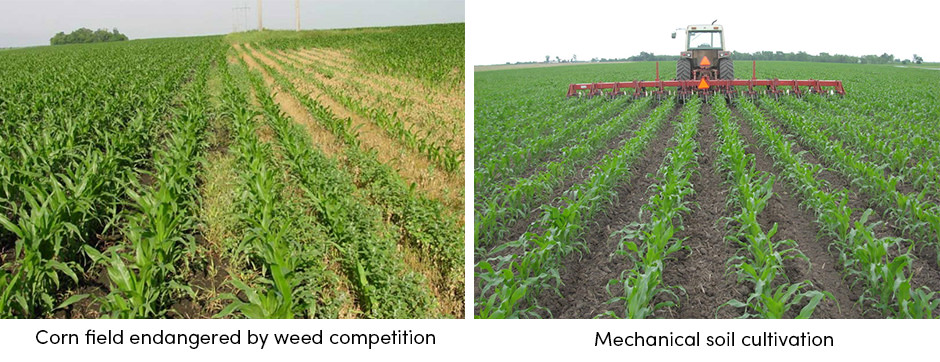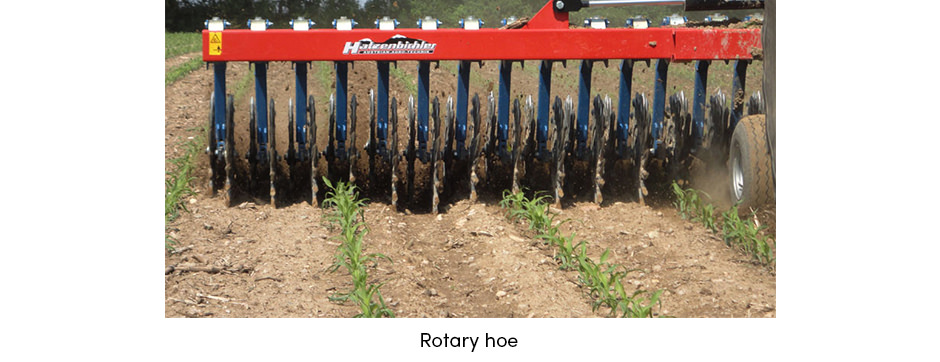Regarding the fact that weeds cause yield losses of up to 45%, weed control is an extremely important part of farm management. The exact direction of weed management largely depends on the crop production type, as well as some other factors, such as the financial capacity or the size of each farm. Still, there is one weeding practice widely used among farmers- soil cultivation. Soil cultivation is a crop maintenance practice that involves tilling or turning over the soil, causing damage to the vegetative parts of weeds. Furthermore, soil cultivation involves the physical cutting of weeds, as well as the provoking of weed seeds to germinate.
Soil Cultivators- Practical Machines for Successful Weed Management
Soil cultivators are popular farming equipment used for mechanical weed control. There are various types of soil cultivators available on the market. Some of them are more appropriate for pre-emergence weeding, while other types enable the post-emergence cultivation. Dependent upon the most appropriate way in which the weeds must be managed, there are three different types of soil cultivators:
- Inter-row soil cultivators; operate between crop rows, enabling remarkable weed control with minimal risk to crops
- Intra-row soil cultivators; operate inside the row between the plants
- Broadcast cultivators; blind cultivation without regard for crop rows
Also available are simple and manually operated soil cultivators, as well as mechanized cultivators, which come with a variety of farming attachments and in a variety of sizes. The most recent technology developed is a totally different dimension of weed control -the precision weed cultivator– which uses a camera and computer system to distinguish weeds from plants and automatically removes the weeds.
Soil Cultivators for Field Crops
In field crops, such as various arable crops and vegetables, farmers usually use the following types of soil cultivators:
- Basket weeders (Cage weeders); the first set of baskets loosens the soil while the second pulverizes the soil, uprooting young weed seedlings. Basket weeders remove the weeds at the surface of the soil without moving soil into the crop row.
- Brush weeders; there are several types available, including vertical and horizontal axis brushes; brushes are made of fiberglass and are flexible. These cultivators uproot, bury, or break weeds; some types require an operator to manage the cultivation so as to prevent damage to the crop. Some of them have an included shield to protect the crops.
- Rotary cultivators; these cultivators have a vertical, horizontal, or oblique axis; they are equipped with blades, points, or knives that turn and pulverize the soil; used in orchard cultivation as well
- Rolling cultivators; consist of gangs of three to five spiders (wheels made of strong, curved, and cutting teeth or notched disks).
- Finger weeders; used for in-row weed management, ground driven rotating fingers push the soil and uproot weeds away from the crop row.
- Torsion weeders; usually mounted on an existing inter-row cultivator for additional in-row cultivation. They consist of a rigid frame with spring tines connected and bent so that two short tine segments are parallel to the soil surface and meet near the crop plant row.
Is Soil Cultivation of Field Crops Possible With Discs and Harrows?
Along with using standard soil cultivators, arable and vegetable farmers also make use of discs and different types of harrows to cultivate their crops. The discs are usually mounted in order to cultivate very closely to the crop row.
They can be adjusted to throw the soil towards the crop row or to move soil and weeds away from the row. Some disc implements require an operator for managing cultivation more precisely.
Regarding harrows, farmers mostly use Flex-tine harrows, consisting of a rigid frame and a variety of fine, flexible tines. The tines destroy the weeds by vibrating in all directions.
Along with flex-tine harrows, rotary harrows (also called rotary hoes) are also a useful cultivation implement. They consist of spiked wheels across the horizontal axle and are effective in managing small weeds.
The Main Characteristics of Orchard Soil Cultivators
Adjustment of row spacing on cultivators represents the key difference between field and orchard cultivation machinery. Orchard row spacing is significantly larger when compared to field crops. Therefore, orchard soil cultivators are designed to easily manage cultivation of wider rows.
Unlike field cultivators, orchard soil cultivators may include an optional supporting roller that leaves behind a perfectly managed soil, which facilitates subsequent orchard activities. Additionally, farmers often use the combination of orchard soil cultivators and mowers.
Despite all differences, additional orchard soil cultivator implements (discs, tines, brushes, sweeps) are quite similar to field cultivators and vary depending on farmers’ specific preferences.
Examples of different orchard soil cultivators are shown below.
Farmers often question which soil cultivation machinery will provide the best weed management outcomes. Unfortunately, there is no simple answer. Each farm has its own requirements. For instance, precision weed cultivators serve as a remarkable solution for weed control. However, these cultivators are not suitable for small and financially limited farms. Best practice is for the farmer to be aware of all possibilities of soil cultivation machinery, while at the same time keeping in mind his own limitations and crop requirements.
Text sources: Non-chemical Weed Management: Principles, Concepts and Technology; M.K. Upadayaya, R.E. Blackshaw || Physical Control Methods in Plant Protection; C. Vincent, B. Panneto, F. Fleurat-Lessard
Image sources: Local Roots Farm || Alloway || SARE || The University of Maine || Terrington Machinery Ltd || Hillside Cultivator Company || Simple Gifts Farm || Automation: The Future of Weed Control in Cropping Systems, S. L. Young, F.J. Pierce || Clemens Vineyard Equipment || Hillside Cultivator Company || Northstar Attachments












